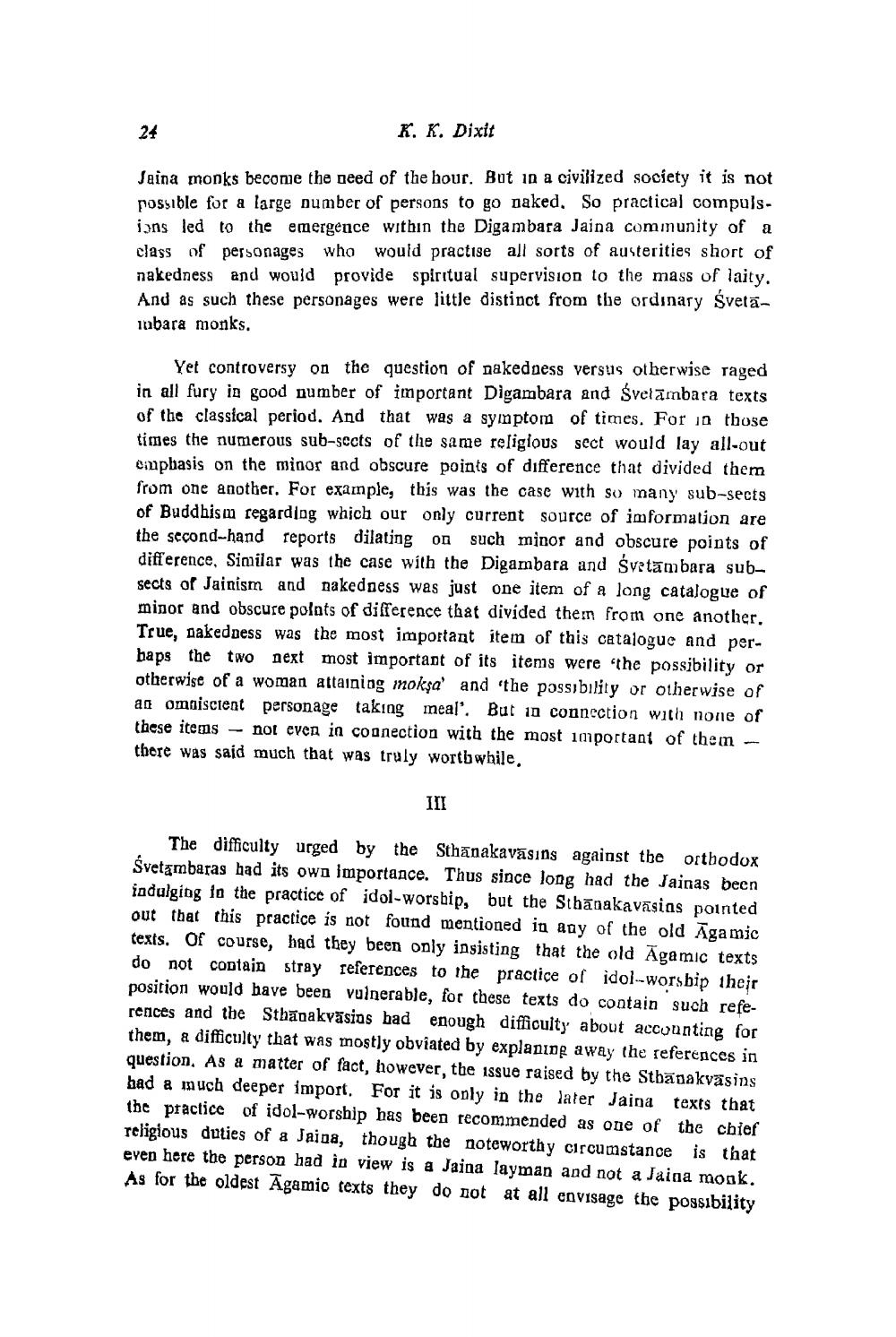________________
24
K. K. Dixit
Jaina monks become the need of the hour. But in a civilized society it is not possible for a large number of persons to go naked. So practical compulsigns led to the emergence within the Digambara Jaina community of a class of personages who would practise all sorts of austerities short of nakedness and would provide spiritual supervision to the mass of laity. And as such these personages were little distinct from the ordinary Svetainbara monks.
Yet controversy on the question of nakedness versus otherwise raged in all fury in good number of important Digambara and Svelambara texts of the classical period. And that was a symptom of times. For those times the numerous sub-sects of the same religious sect would lay all-out ophasis on the minor and obscure points of difference that divided them from one another. For example, this was the case with so many sub-sects of Buddhism regarding which our only current source of imformation are the second-hand reports dilating on such minor and obscure points of difference, Similar was the case with the Digambara and śvatāmbara subsects of Jainism and nakedness was just one item of a long catalogue of minor and obscure polots of difference that divided them from one another, True, nakedness was the most important item of this catalogue and perbaps the two next most important of its items were the possibility or otherwise of a woman attaining mokşa' and 'the possibility or otherwise of an omniscient personage taking meal'. But in connection with none of these itens - not even in connection with the most important of them - there was said much that was truly worthwhile.
III
The difficulty urged by the Sthanakavāsıns against the orthodox Svetambaras had its own importance. Thus since long had the Jainas been indulging in the practice of idol-worship, but the Sthānakavasins pointed out that this practice is not found mentioned in any of the old Āgamic texts. Of course, had they been only insisting that the old Agamic texts do not contain stray references to the practice of idol-worship their position would bave been vulnerable, for these texts do contain such references and the Sthānakvāsias had enough difficulty about accounting for them, & difficulty that was mostly obviated by explaning away the references in question. As a matter of fact, however, the issue raised by the Stbanakvasins had a much deeper import. For it is only in the later Jaina texts that the practice of idol-worship has been recommended as one of the chief religious duties of a Jaina, though the noteworthy circumstance is that even here the person had in view is a Jaina layman and not a Jaina monk. As for the oldest Agamic texts they do not at all envisage the possibility




